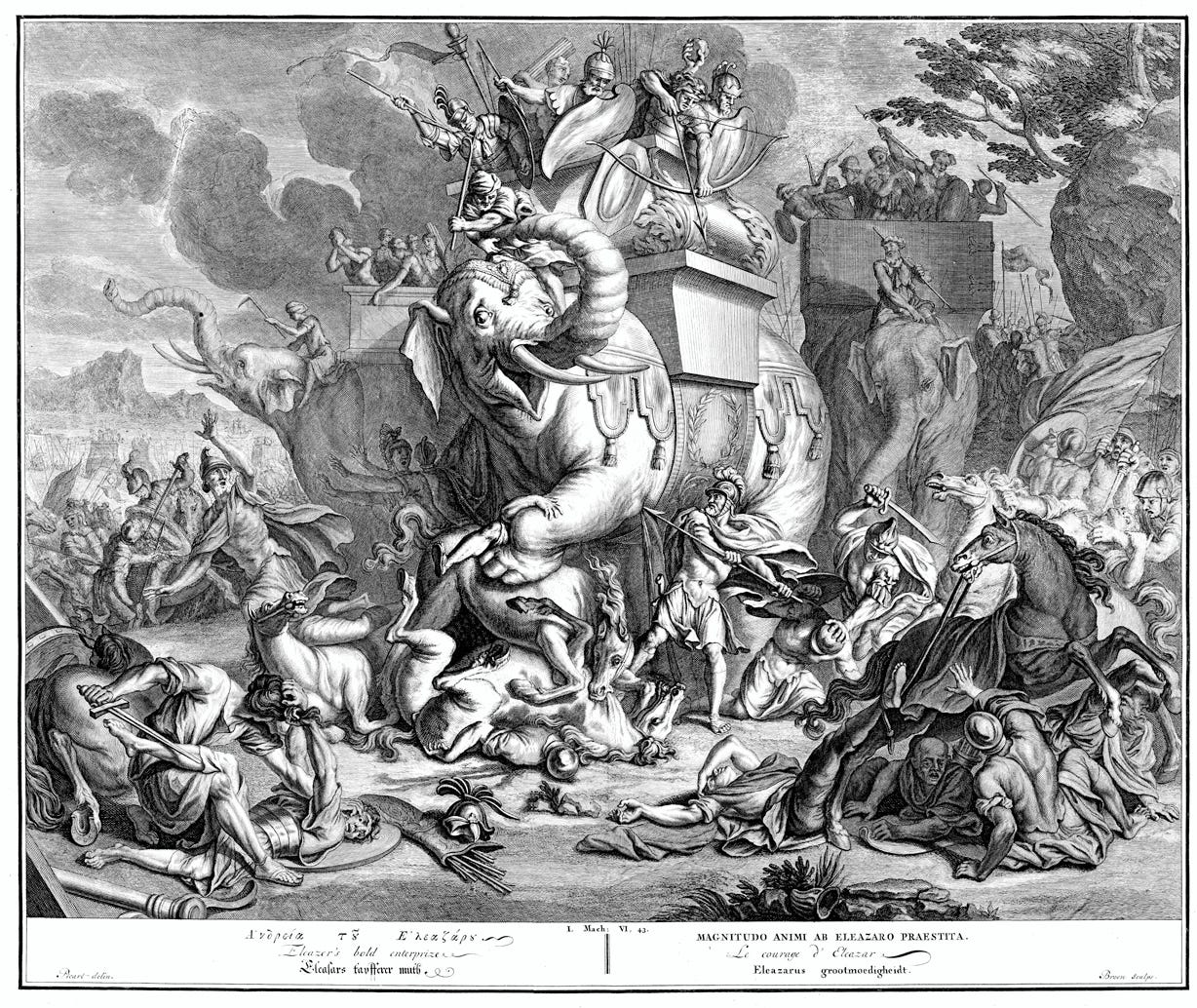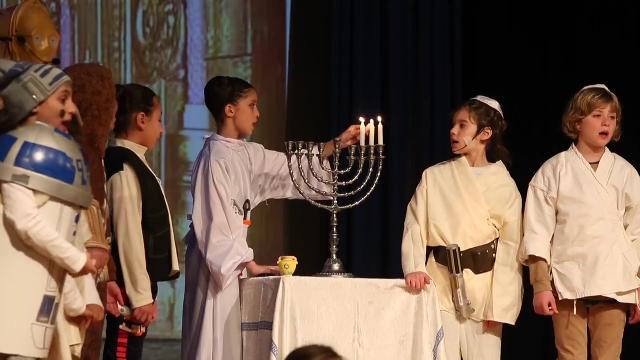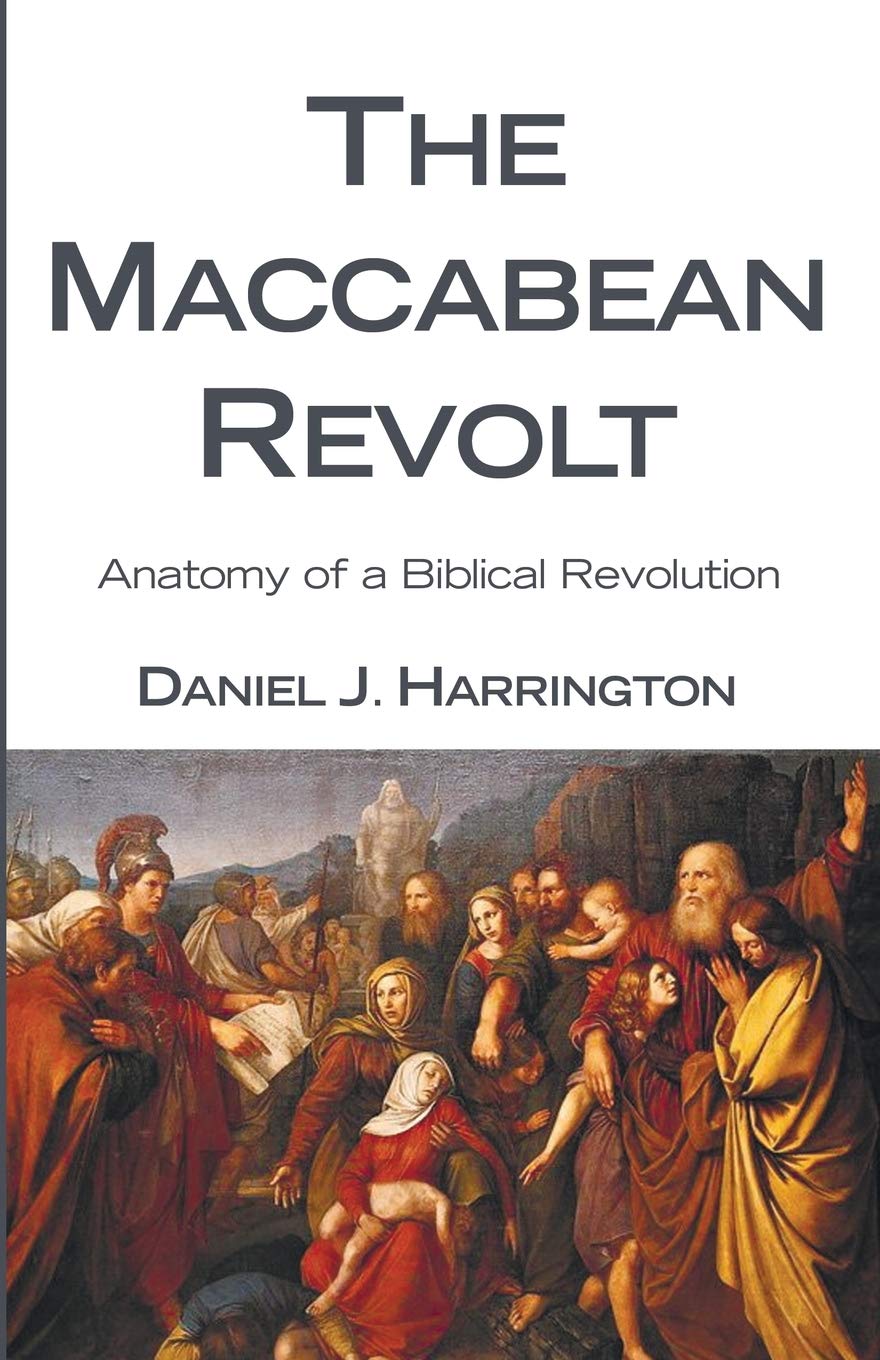The revolt launched by the priest Mattathias and later led by his third son, Judah Maccabee, was both a civil war and a war against an outside enemy. The company of Greek officers who arrived at Modi’in intending to enforce the king’s ordinances addressed Mattathias first, for he was held in high esteem by the villagers. They ordered him to begin the sacrificial offerings to the pagan idols, promising that in return he and his sons would be admitted to the circle of the king’s “friends.”
- The Revolt Of The Maccabees
- Maccabean Revolt Antiochus Iv Epiphanes
- The Revolt Of The Maccabees Coloring Pages
In modern Judaism, the holiday of Chanukah celebrates the victorious revolt of the Jews against the Seleucid Greeks in 167-164 BCE (“before the common era” = BC). Today we refer to these events as the Maccabean Revolt, named after the Jewish leader, Judah Maccabee.
Revolt of Alexander Epiphanes. 10 In the one hundred sixtieth year Alexander Epiphanes, son of Antiochus, landed and occupied Ptolemais. They welcomed him, and there he began to reign. 2 When King Demetrius heard of it, he assembled a very large army and marched out to meet him in battle. 3 Demetrius sent Jonathan a letter in peaceable words to honor him; 4 for he said to himself, “Let us. Hanukkah, the Jewish festival of lights, celebrates the Maccabean Revolt (167-160 BCE), and the narrative that Jewish rebel Judas Maccabeus vanquished the evil Greek emperor Antiochus and rededicated the Temple, at which the miracle of the oil occurred. When Mattathias died, the revolt was led by his son Judas, or Judah Maccabee, as he is often called. By the end of the war, Simon was the only one of the five sons of Mattathias to survive and he ushered in an 80-year period of Jewish independence in Judea, as the Land of Israel was now called. The story of the revolt is told in two versions, the First and the Second Books of the Maccabees (although the second is not a sequel to the first, but a completely different telling). While the First Book glorifies the deeds of the Hasmonean family 'through whom deliverance was given to Israel', 2 Maccabees stresses God as the defender.
Mattathias refused outright. He killed a Jew who obeyed the command and then one of the king’s men. His flight to the mountains, together with his sons and his friends, marks the beginning of the uprising. Thus it appears that the revolt was directed first of all against those Jews who were willing to submit to Greek custom. Only then was it directed against the foreign occupier, the Syrian ruler who was forcibly imposing his culture upon the Jewish population and plundering the Temple and the land.
When is Hanukkah 2020? Get all the details on the holiday here.
How the Rebels Fought

Our information about the rebellion is derived mainly from texts which eulogize Mattathias’s dynasty (I Maccabees) and in particular the figure of Judah, depicted as a lion of the desert (II Maccabees). We know much less of the Hassideans, the “pious,” who fought alongside Mattathias’s sons. What is obvious, however, is that one cannot win a war armed solely with religious purity. Compromise was essential from the beginning as, for example, Mattathias’s decision to fight on the Sabbath.
Moreover, the Seleucid army could not be defeated by guerrilla warfare alone. The Jewish rebels soon organized a real army modeled on the Greek military forces and capable, when fighting on its own terrain, of overcoming the Syrian troops. With great diplomatic skill they learned how to exploit the quarrels within the Seleucid dynasty, opportunely supporting some of the “usurpers” and obtaining various concessions in return.
Diplomacy and Propaganda

They also cultivated relations with distant nations, either for symbolic reasons, as in the case of the alliance with Sparta which was based upon the notion of affinity between the heirs of Lycurgus and the heirs of Moses, or for practical purposes, as in the alliance with Rome, the most formidable enemy of the Greeks. The negotiator with Rome was a Jewish historian of Greek culture, Eupolemus, whose father could have been the man who had negotiated with Antiochus III in 200 BC.
Maccabee diplomacy did not exclude propaganda. The Book of Daniel glorified the kingdom of the “saints” which would follow the four successive kingdoms of the beasts. Judith and Esther, heroines of the recent past, were depicted as the daughters of the bold prophetess Deborah, while Judah himself was presented as an incarnation of Joshua–judge and conqueror of the land.
The Revolt Of The Maccabees
The Revolution is Successful
The revolt achieved rapid success. At the end of the year 164 BC, the first Festival of Light (Hanukkah, [or] “inauguration “) was celebrated in a Temple purified of all pagan cults. (It is only through this festival that the revolt was transmitted to rabbinical posterity. The history of the revolt was retained only in Greek texts later preserved by Christian authors.) Until 141 BC, however, a Seleucid garrison remained in the citadel (Acra) of Jerusalem, protecting by its very presence those Jews who wished to maintain the Hellenistic way of life.

Meanwhile, the Jewish state was consolidating its achievements: “purifying” the land by imposing the circumcision of all infants, eliminating “arrogant spirits,” and capturing enemy cities such as Caspin on the Golan, and even tolerant Scythopolis (Beth‑Shean). The frontiers of the state were enlarged to include, even before its independence, the whole of the Land of Israel. Jonathan, and later Simeon [Maccabee], were recognized by the Seleucids as high priests and even as governors. But the Maccabees’ vision, the revival of the era of the Judges, was still but a distant dream.
Maccabean Revolt Antiochus Iv Epiphanes
Reprinted with permission fromA Historical Atlas of the Jewish People edited by Eli Barnavi and published by Schocken Books.
Join Our Newsletter

The Maccabean Revolt was a conflict, lasting from 167 to 160 BC, between a Judean rebel group known as the Maccabees and the Seleucid Empire. In the narrative of I Maccabees, after Antiochus issued his decrees forbidding Jewish religious practice, a rural Jewish priest from Modiin, Mattathias the Hasmonean, sparked the revolt against the Seleucid Empire by refusing to worship the Greek gods. Mattathias killed a Hellenistic Jew who stepped forward to offer a sacrifice to an idol in Mattathias' place. He and his five sons fled to the wilderness of Judah. After Mattathias' death about one year later in 166 BC, his son Judah Maccabee led an army of Jewish dissidents to victory over the Seleucid dynasty in guerrilla warfare, which at first was directed against Hellenized Jews, of whom there were many. The Maccabees destroyed pagan altars in the villages, circumcised boys and forced Jews into outlawry.[1] The term Maccabees as used to describe the Jewish army is taken from the Hebrew word for 'hammer'.[2]
The revolt itself involved many battles, in which the Maccabean forces gained notoriety among the Seleucid army for their use of guerrilla tactics. After the victory, the Maccabees entered Jerusalem in triumph and ritually cleansed the Temple, reestablishing traditional Jewish worship there and installing Jonathan Maccabee as high priest. A large Seleucid army was sent to quash the revolt, but returned to Syria on the death of Antiochus IV. Its commander Lysias, preoccupied with internal Seleucid affairs, agreed to a political compromise that restored religious freedom.
The Jewish festival of Hanukkah celebrates the re-dedication of the Temple following Judah Maccabee's victory over the Seleucids. According to Rabbinic tradition, the victorious Maccabees could only find a small jug of oil that had remained uncontaminated by virtue of a seal, and although it only contained enough oil to sustain the Menorah for one day, it miraculously lasted for eight days, by which time further oil could be procured.[3]
It is possible to read the main sources for the events as suggesting that there was no persecution of the Jews, but a synoecism in the aftermath of unrest,[Clarification needed]
References[edit | edit source]
- ↑Nicholas de Lange (ed.), The Illustrated History of the Jewish People, London, Aurum Press, 1997, ISBN 1-85410-530-2
- ↑http://www.jewishvirtuallibrary.org/jsource/History/Maccabees.html Jewish Virtual Library
- ↑Talmud, Tractate Shabbat
- ↑http://themarginaliareview.com/archives/3083
The Revolt Of The Maccabees Coloring Pages

| This page uses Creative Commons Licensed content from Wikipedia (view authors). |